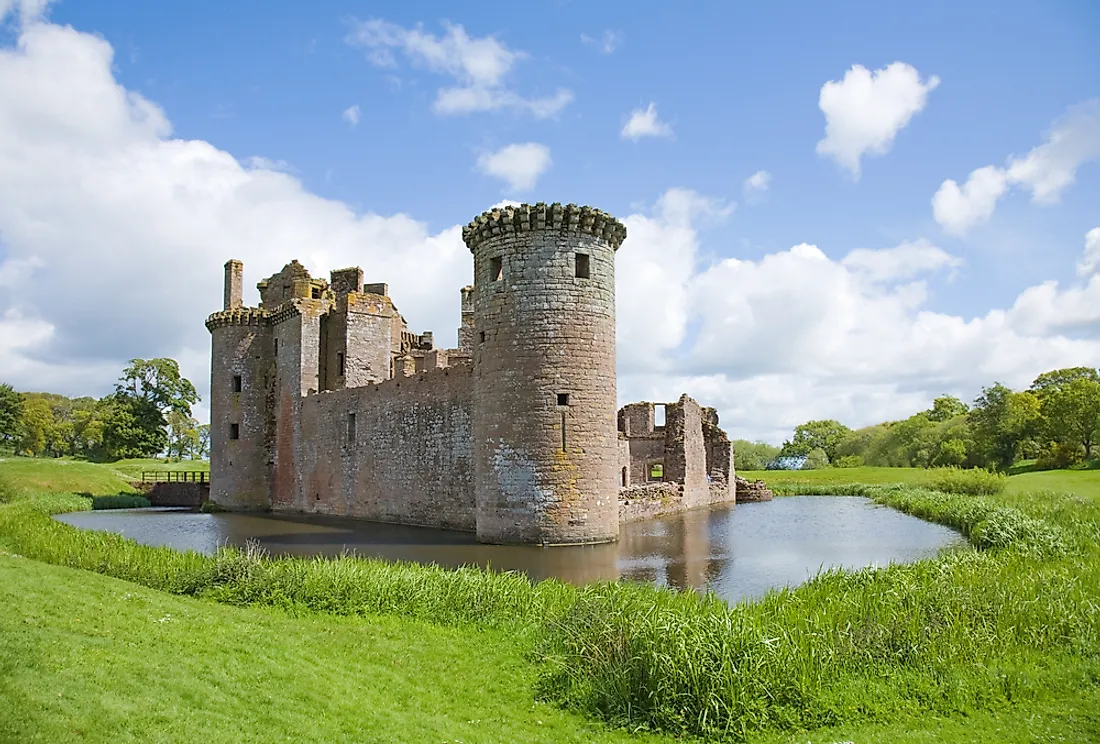Medieval Castles - Features and History

The medieval castles refer to castles built during the Middle Ages, Castles are fortified structures mainly built in the Middle East and Europe in the middle ages. European nobles built and occupied castles. There are many stunning examples of medieval castles that still stand today. The word castle comes from the Latin word castellum, derived from the word castrum meaning a fortified place. Scholars define a castle as a fortified residence of a noble or a lord. A castle is different from a palace, as a palace is not fortified. A castle is also distinct from a fortress, as a fortress was not always occupied by a noble. For the period of 900 years when castles were built, they adopted many designs. However, the castles shared some features such as arrowslits and curtain walls.
History of Castles
Castles are an innovation of the European and they emerged in the 9th and 10th centuries. When the Carolingian empire fell, its territory was divided among princes and lords. The nobles took the initiative to build castles in order to defend the acquired territories. The castles offered protection from enemies. They also formed a base from which raids and battles were planned and launched. Besides their military purposes, castles also acted as symbols of power and served as centers of administration. Castles constructed in rural areas were located near important features such as fertile land, water sources, and mills. In urban areas, castles helped control local populace and travel routes.
Purposes of Castles
Castles served a wide range of purposes. The most distinct purposes were domestic, administrative, and military. Castles also served as offensive tools and could be used a base of operations in foreign territories. The Norman invaders of England constructed castles for defensive purposes. The castles also helped pacify the inhabitants of the country. William the Conqueror had fortified key positions as he advanced through England. By building castles, William was able to secure the land he had conquered. Between the years 1066 and 1087, he has established 36 castles. These castles are some of the oldest in Europe.
Castles lost their military significance towards the end of middle ages. This was due to the advancement of strong canons and the prevalence of artillery fortifications, which could withstand the canons.
Features of Castles
Initially, castles were constructed using earth and timber. Later, stone replaced the castles’ defences. Early castles relied on a central keep and exploited natural defences. They often lacked advanced features such as arrowslits and towers. A specific approach to castle defence arose in the 12th and 13th centuries. A proliferation of towers occurred and great emphasis was made on flanking fire. The castles relied on concentric defence and had various stages of defence that could all function at the same time. This helped to intensify the castle's firepower.
Gunpowder was introduced to Europe in the 14th century and affected castle building as from 15th century. In the 15th century, artillery was powerful enough to break through walls of stone. In the 16th century, new techniques emerged to help deal with advanced canon fire. This saw the decline of true castles, and instead artillery forts emerged. In the 18th century, there was a new interest in castles. Mock castles were constructed and revival of ancient architecture took place. However, by this time, castles did not serve a military purpose.











